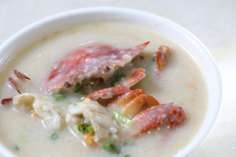
Why Hong Kong’s local cuisine has evolved to become a symbol of the city’s identity
As the city struggles with an identity crisis, those restaurants still serving dishes that defined a generation are finding it pays to remain true when cooking up the old family favourites
In an open kitchen joint in Tai Po, a pan sizzles as Wong Wing-leung deftly flicks it with his wrist. The smell of Hong Kong cooking wafts through the bright, airy restaurant. Orders scrawled on slips of paper line the metal countertop as busboys scurry back and forth.
Wong owns Chan Hon Kee, one of Tai Po’s oldest cha chaan teng, or restaurants, which serves a mix of affordable Chinese and Western fare unique to the city. Opened by his uncle in the early 1960s in Tsuen Wan, the restaurant relocated to Tai Po about 30 years ago when Wong took over the business.
“In the early 1960s, we only served noodles. The noodles haven’t changed, but I’ve added many more items to the menu like our famous clay pot rice,” Wong said. “The flavours have definitely changed, but change is good. You have to evolve with the times or you’ll get left behind.”
Restaurants like Chan Hon Kee are part of a bustling Hong Kong food scene that in recent years has been gaining legitimacy as a distinct cuisine both locally and abroad.
Local food words like char siu and milk tea were added to the Oxford English Dictionary earlier this year. In July, a hawker stall serving Cantonese soy sauce-braised chicken in Singapore’s Chinatown was awarded a Michelin star.

This week, local food became the theme of a print art exhibition organised by the Hong Kong Youth Arts Foundation in collaboration with other groups.
Showcasing print artworks created by youth from charity organisation House of To Kwa Wan Stories, the exhibition highlights local food in the context of the To Kwa Wan community.
The reification of Hong Kong food has sparked discussions among Hongkongers over its role in local heritage and culture, prompting differing perspectives on how to best preserve and nurture the cuisine.
There is an indirect, but very real relationship between the localist movement and the independence movement and the resurgence of Hong Kong food.
The cuisine and specific food items are also becoming increasingly important as a marker of local culture in a city perpetually embroiled in an identity crisis, experts say. In recent years, the distinction of Hong Kong food – as well as efforts to define and preserve it – have become an indirect avenue through which Hongkongers are safeguarding and expressing their cultural identity.
But there wasn’t always a distinction between local food and other Chinese cuisines. Hong Kong cuisine, which includes both Western and Eastern elements, is a relatively new one that quickly developed with the city’s economy from the late 1960s.
Rapid economic growth and the influx of post-war immigrants sparked diverse eateries and helped shape local cuisine into what it is today, according to a Hong Kong Heritage Museum report.
“Under competition, distinction was blurred and the restaurants underwent constant adaptation and developed local characteristics,” the report said.

Since the handover, Hongkongers have struggled to define themselves and establish a unique, collective identity separate from the mainland. Tensions between the two in recent years have led to protests on various issues as well as the rise of localism – a movement centred on preserving the city’s autonomy and local culture.
The number of people who identified as “Hongkongers” as opposed to “Chinese” almost doubled since July 2012, a University of Hong Kong poll showed.
“This Hong Kong identity is rather new. It’s a product of the 1960s and 70s,” Gordon Mathews, a professor of anthropology at the Chinese University of Hong Kong, said. “There is an indirect, but very real relationship between the localist movement and the independence movement and the resurgence of Hong Kong food.”
Now, the replacement of dai pai dong or open-air food stalls with corporate eateries and shopping centres is a hot button issue. There are only about 25 left in the city as result of licensing regulations and rapid urbanisation. After the Lunar New Year began in February, clashes with police broke out on the streets of Mong Kok after a protest against the closure of the district’s unlicensed food stalls. Lau Siu-lai, a hawkers’ rights advocate, won a seat in the city’s Legislative Council elections last month.

Poon Ching-cheung, owner of Goldfinch in Causeway Bay, a second generation Western-style Hong Kong restaurant established in 1962, said the number of eateries serving authentic and traditional dishes had decreased over the years. As a result, his restaurant has strived to adhere to its original menu and made minimal changes.
“There are certain dishes that I used to eat when I was younger that I just can’t find anymore,” 46-year-old Poon said, adding that half of the restaurant’s staff had worked there for more than 30 years.
“We want to keep the old style of cooking. We’ve kept the same recipes for more than 50 years.”
According to John Wong, assistant professor of Hong Kong studies at the University of Hong Kong, anxiety over the crackdown on street food and the disappearance of local stores and “authentic” dishes is a new phenomenon.
Such concerns and resentment was not as prevalent in the 70s or the 80s, Wong said. And while he supports the legitimisation of Hong Kong cuisine, efforts to define the city’s food and preserve certain items may prevent it from evolving, he added.
“(Such concerns) have a danger of ossifying the definition of certain types of food items,” Wong said.
“It doesn’t necessarily give justice to the fluidity of our food.”

